Even before the lockdown era, we’ve seen interest growing for UPS and only after 2020 that we’ve seen that interest skyrocket with the rise in the work-from-home work force. But owning a UPS is much more simpler than buying one and much of the confusion lies in what product you should buy. In this review we’re taking a look at our first consumer UPS: the EATON 5A UPS.
Launched just last month, the EATON 5A is an entry-level, consumer-grade UPS made with one purpose in-mind: prove a compelling UPS that offers compelling quality for a reasonable price. In the video version of this review we talk about the advantage of having a UPS and how the Eaton 5A fits into that formula and in this article, we expand on that with some details on the selection process as well and more.
For this review, we’ll be specifically looking at the 2200VA capacity model of the EATON 5A UPS. Read on!
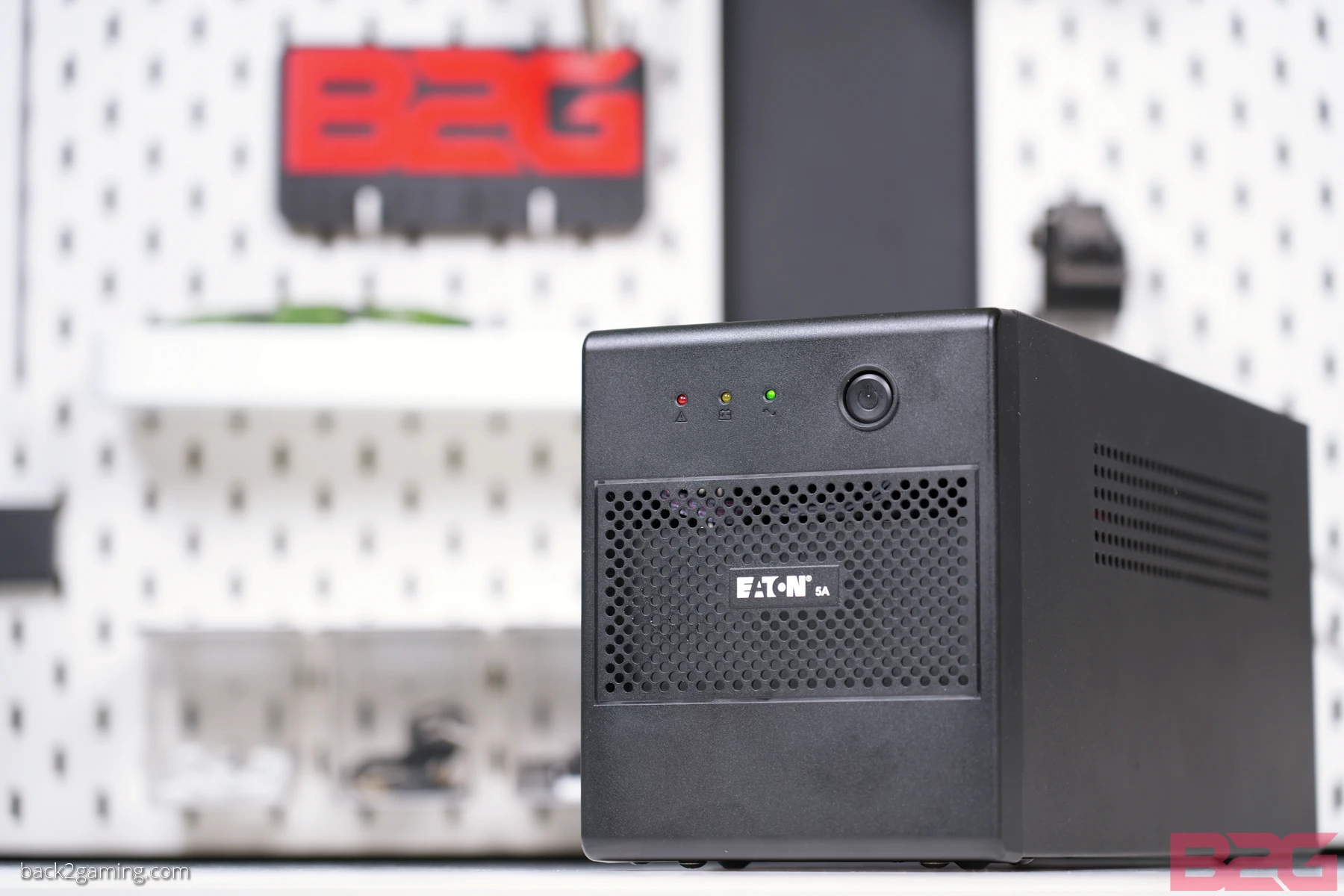
Feature, Specification and Pricing – EATON 5A UPS
| Model Name | VA | Watts | Price |
|---|---|---|---|
| 5A700I-NEMA | 700VA | 360W | PHP2199 |
| 5A900I-NEMA | 900VA | 480W | PHP4199 |
| 5A1200I-NEMA | 1200VA | 650W | PHP6199 |
| 5A1500I-NEMA | 1500VA | 900W | PHP9599 |
| 5A2200I-NEMA | 2200VA | 1200W | PHP11999 |
Closer Look – EATON 5A UPS
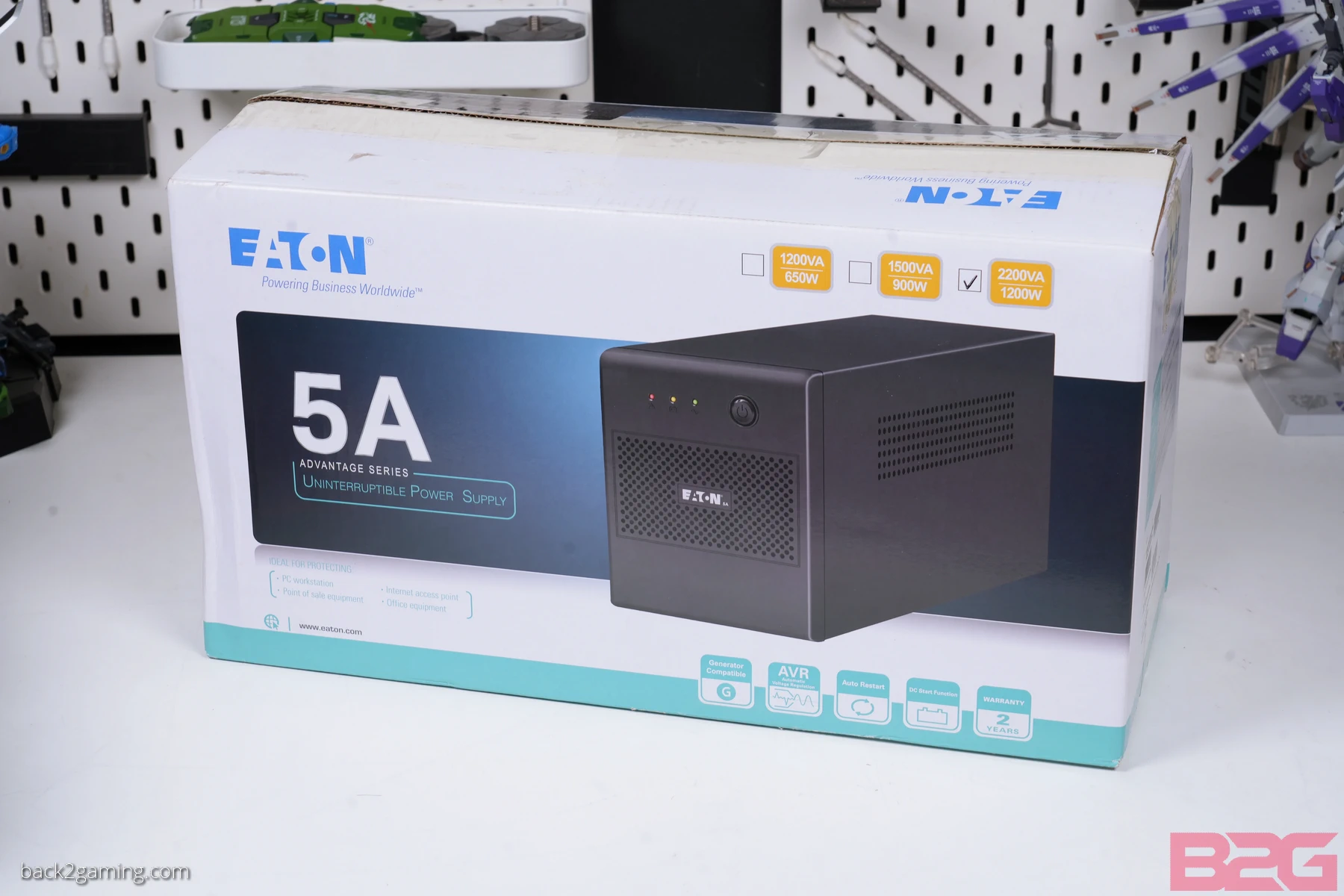
The EATON 5A UPS is packaged in a colored box with a hero shot of the product on the front. The model name is printed on the side as well with a checkbox of the capacity at the top.
As the EATON 5A varies in capacities, the size of the actual unit will vary as well as the box. the Eaton 5A 1200VA, 1500VA and 2200VA share similar shipping packaging while the 700VA and 900VA will have a different size packaging due to the reduced foot print.
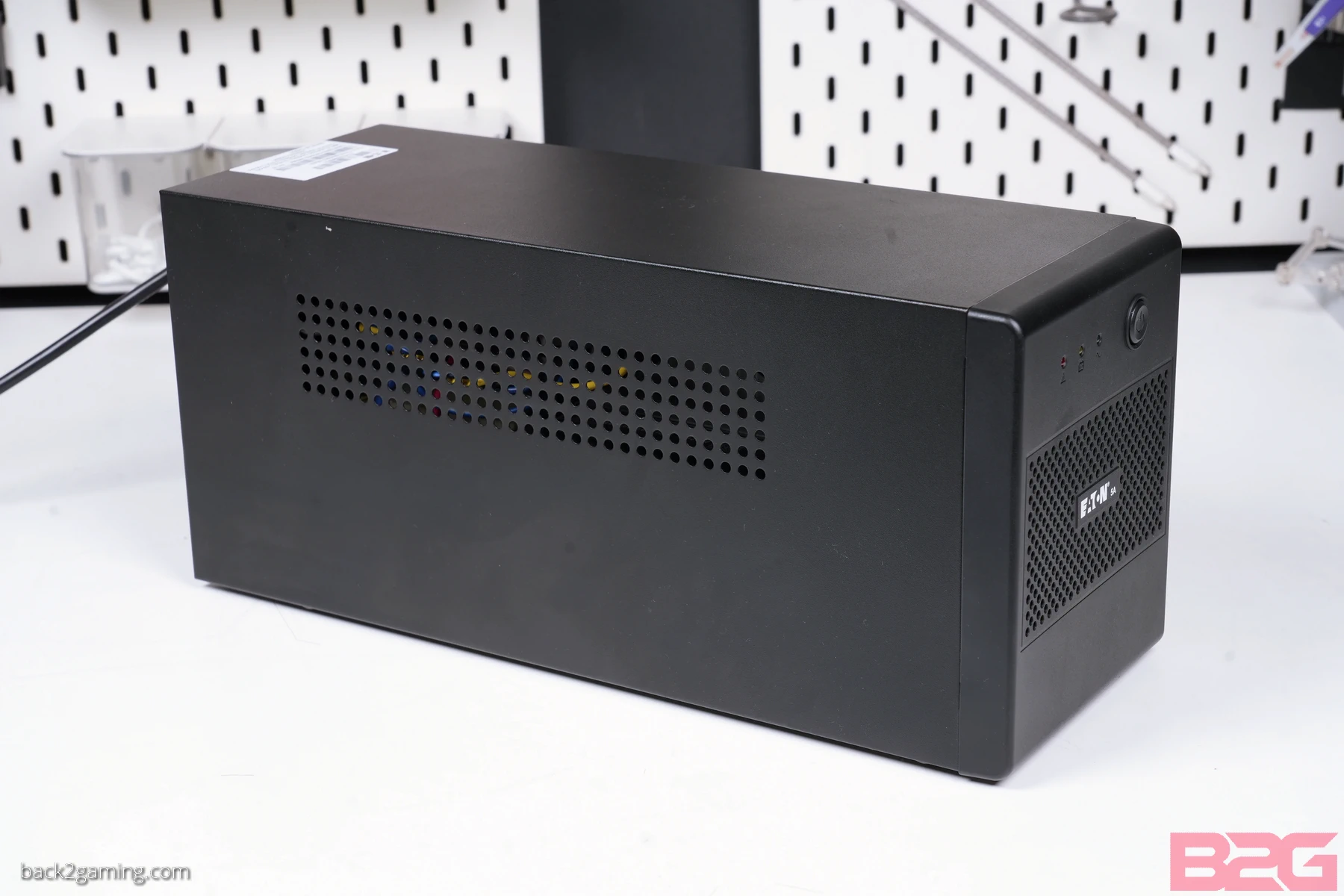
The package includes a manual sheet and the actual unit. Take note that as the capacity gets larger, the weight of the unit grows. As a warning, be careful in lifting the UPS or the package without assistance if you feel its too heavy.
The Eaton 5A 2200VA tops out at 11KG~ with the 1500VA around the same and gets lighter as the size goes down, at 4KG~ for the 700VA and 900VA and the 1200VA at 6.25KG.
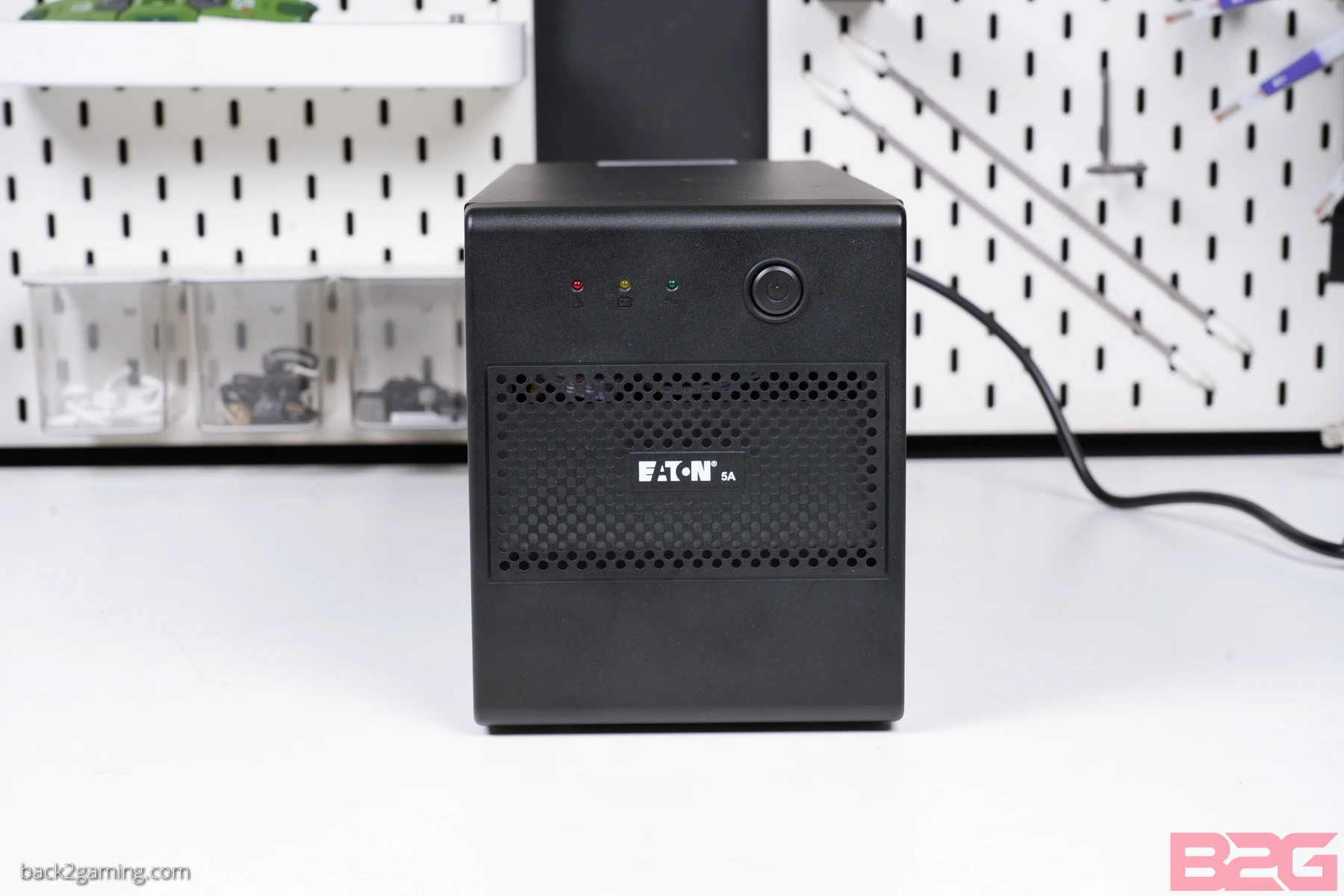
A UPS is about as exciting to look at as a blank piece of paper. Its made to be discrete and out of the way and the EATON 5A’s design is nothing to write home about as well. While its not a stand-out design, its not a plain box either with some venting at the front and the sides.
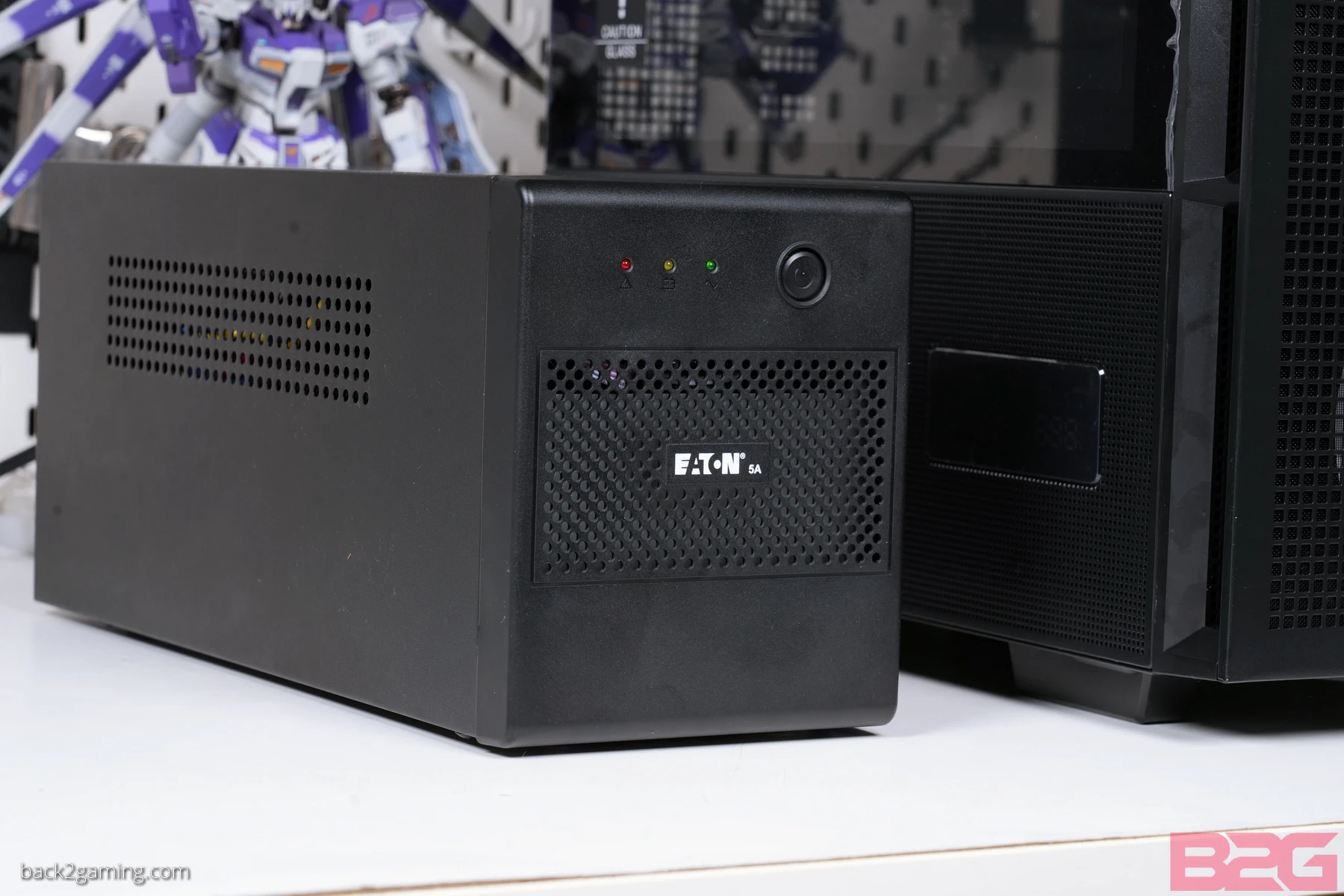
The EATON 5A is deceptively small in photos by itself so here it is alongside a full-size ATX tower chassis. Its about the same height as the PSU chamber and as long as the case itself.
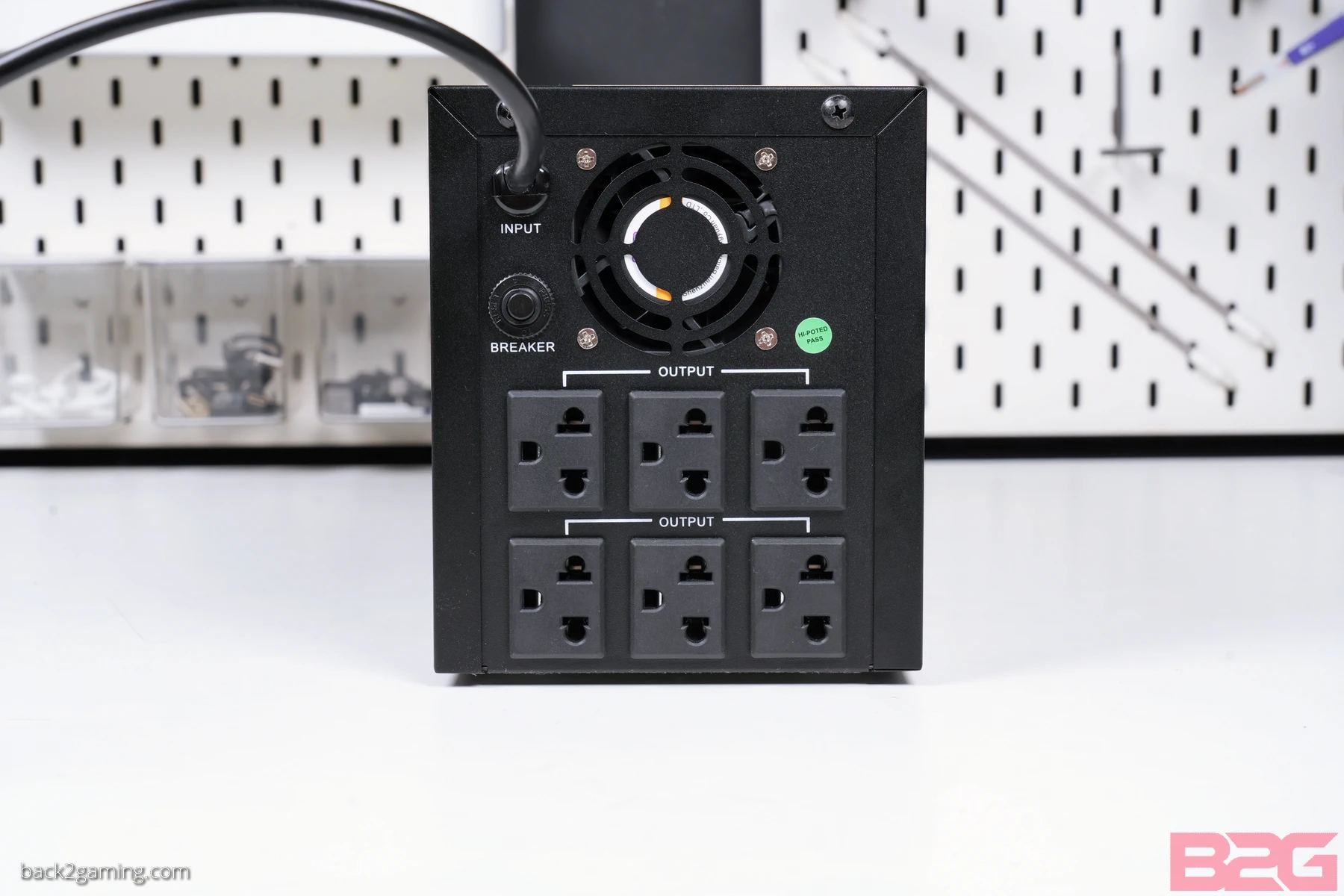
The EATON 5A 700VA and 900VA NEMA models (the ones in PH) have 4 outlets and the 1200VA, 1500VA and 2200VA have 6 outlets. All models feature a breaker and surge protection on all outlets.
The AC input cable is hardwired to the unit. The larger 1200VA/1500VA/2200VA will also feature a blower at the back which is actually quite audible when battery back-up kicks in. More on that later.
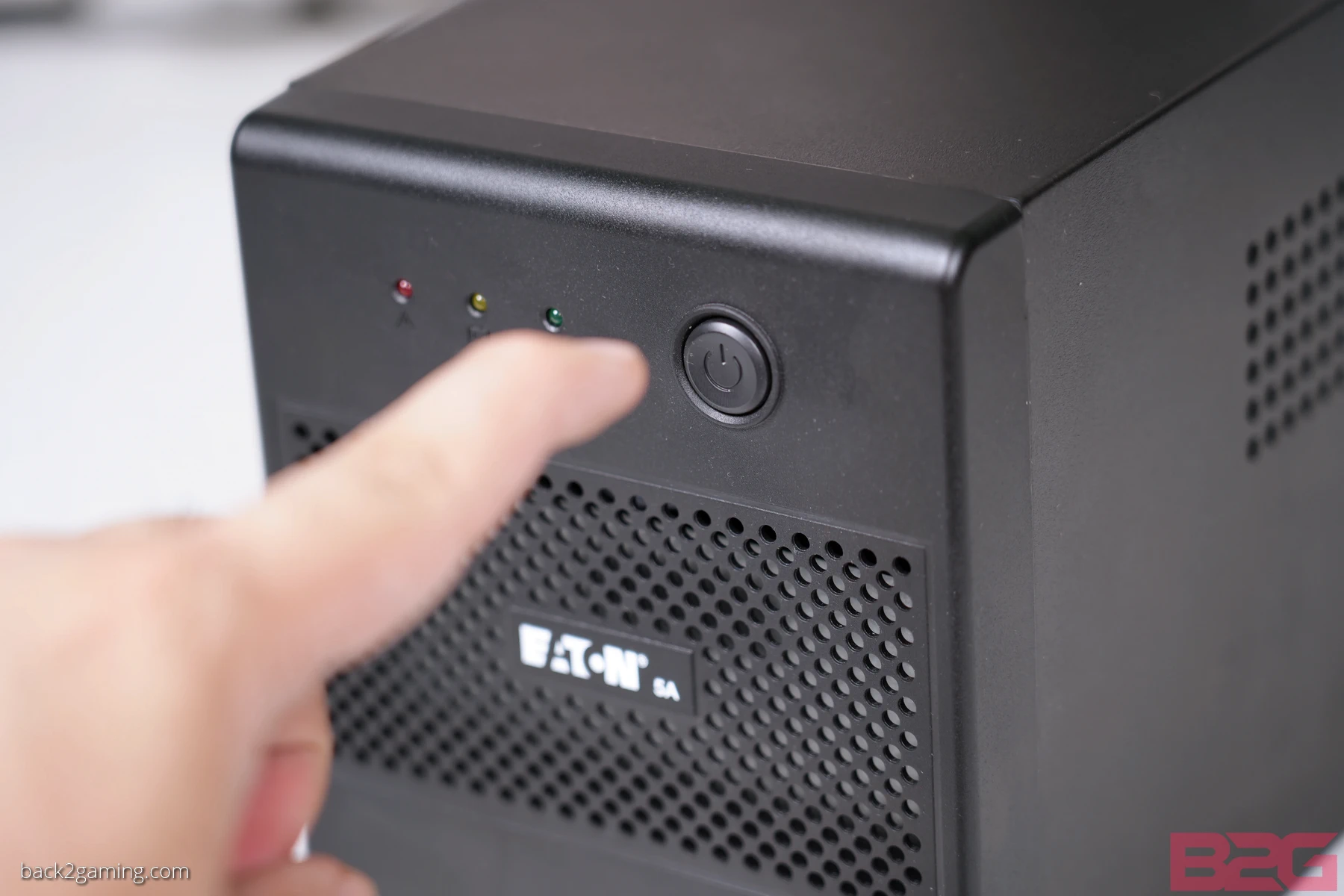
There is no setup needed when you get the EATON 5A UPS. Just plug it into an outlet and plug in your devices and power on the UPS. Its that easy.
UPS Capacities and Which to Choose
Most uninterruptable power supply or UPS will come with a VA rating. This is the capacity rating of the UPS which unfortunately doesn’t equate directly to power draw ratings of electrical devices. This is confusing to most users and is actually a valid question. Which capacity do I choose for my UPS?
To answer that, first you have to know what you’re planning to back-up with the UPS. For example, an average household desktop PC can be around 300W. Add the monitor power draw and you should need at least 400W. So how do we match that to our UPS.
A UPS capacity can easily be coverted to wattage by multiplying the VA rating by the UPS’ power factor. Typically the power factor rating is 0.6, so for example, a 1000VA UPS multiplied by 0.6 gives us 600W (VAxPF=W, 1000×0.6=600). In the case of the Eaton 5A, the company does include the wattage rating in the marketing materials as the box. Eaton does not state the PF for the 5A but quick math (W/VA=PF) we have around 0.5. Rounding that up to 0.6 suggests Eaton is selling themselves short by only declaring 1200W for the 2200VA.
Going back to our sample, we require 400W so which would fit? The choice would easily be the 900VA as it is rated for 480W. Then the next question is: how long will this keep me online or powered-on during a power outage?
The basic math is a UPS should provide you at least 1 minute for the rated power so a 900VA UPS rated for 480W should give us an entire minute while drawing 480W. But this where the complexity of dynamic power loads come in, but before we tackle that let’s do the computation for 400W first.
Again, our example system is a 400W unit, 83% of 480W. Computing for duration, this is going to give us less than a minute of uptime. This is not a good window to safely shutdown. The 1200VA would give us more time to quickly power off and shutdown.
But this accounts for linear power draw, meaning the draw is constantly 400W. A computer has dynamic power draw and closing applications can put the system in its idle state. This can also be the same as simple alt-tabbing. For example, our test bench here in Back2Gaming draws a massive 400W only with the CPU fully loaded (i9-13900K). Add a GPU to the mix and that would easily cross 500W. Quicky closing applications drops it back down to 90W-100W idle.
That said, at 100W the Eaton UPS can give us the following uptime (approximate):
- 700VA @ 100W: 18 minutes
- 900VA @ 100W: 30 minutes
- 1200VA @ 100W: 25 minutes
- 1500VA @ 100W: 55 minutes
- 2200VA @ 100W: 60 minutes
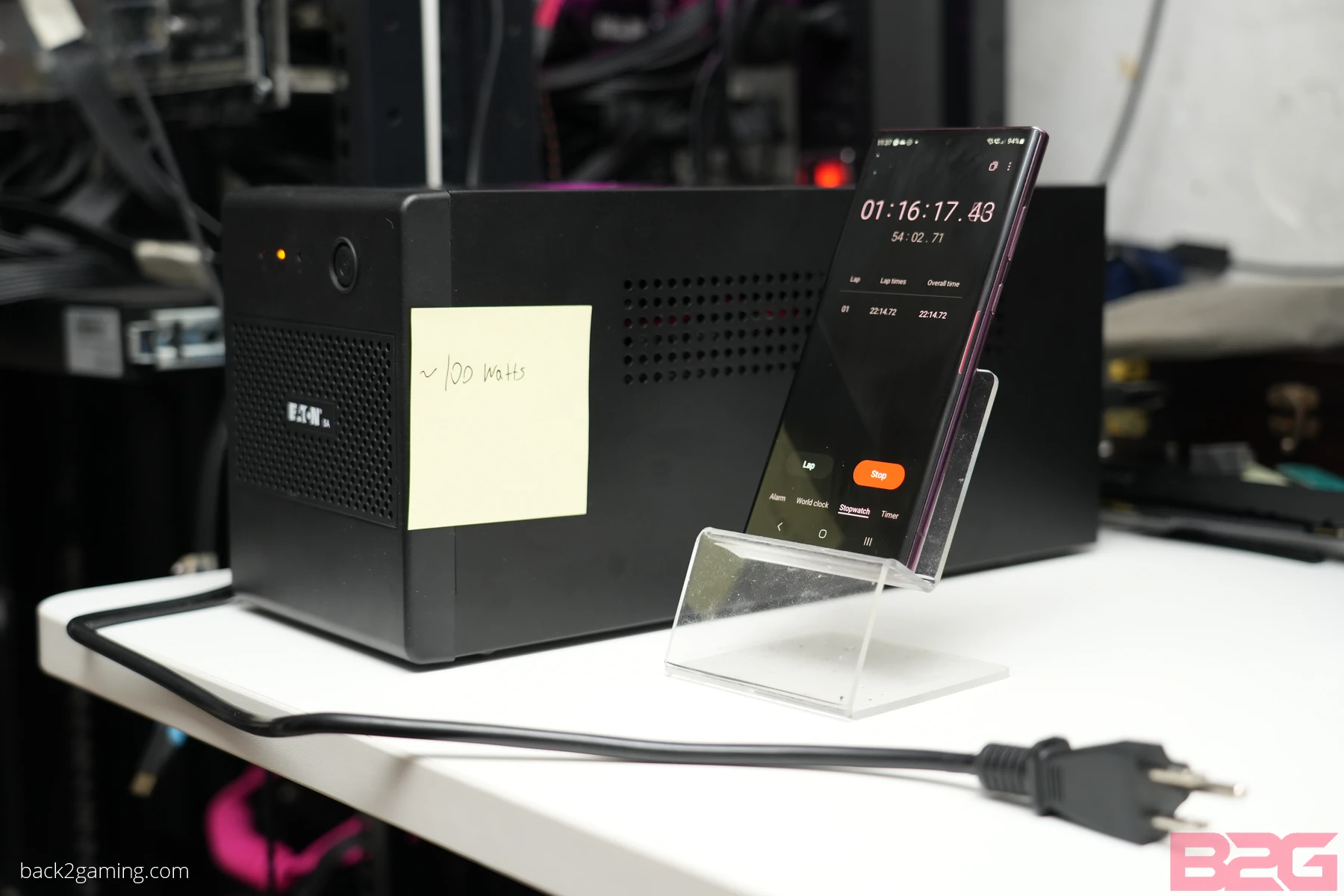
To verify this, we had our test bench hooked up by itself to the Eaton 5A 2200VA at ~100W load and it gave us ~90 minutes of power. Of course, its highly advised that you save and power down instead of continuing to use your device by this point.
If you need to continue using certain devices especially lower power ones like modem/routers then even the lower capacity model should give you enough. You can check your device’s specs only to know how much power it draws on average. Most modem/routers from ISPs should at most 15W but some can go higher or lower.
For more info about power draw, you can read more from my PSU guide here.
User Experience & Conclusion

Testing a UPS is more about the endurance of the product under years of use rathen than a few weeks and having played around with the EATON 5A UPS under load with our test bench, the important part is that it survives a random plug-pull that cuts the power of the unit while a 3DMark benchmark is running with an RTX 4080 on the bench because if it didn’t, I would be very angry.
Kidding aside, power quality on the output side looks consistent dropping from powered-on to off. The scope shot above shows the Eaton 5A going from sinewave to quasi-sinewave when power is cut. For those who are concerned about this, the Eaton 5A is approximate sinewave or quasi-sinusoidal on battery power which is typical of entry-level UPS.
This does have an effect on some equipment but for strictly backup power for computers, networking, POS, and others, the Eaton 5A is enough.
I have to note though that the simplicity of the Eaton 5A also requires users to understand that the unit needs to charge after draining. Keeping your unit alive will drain the battery so while you may survive 2 or so 20-second power outage, you may not survive a third. That said, one of the things that’s missing on the Eaton 5A is a charge level indicator.
The unit takes 6 hours to charge to 90% but I noticed that even a day after fully charging, the unit still draws 30W off the outlet with no load. That’s a lot for trickle charging so it might be the unit’s actual draw for itself. Another thing is the fan on the larger units. Its a necessary feature to cool down the unit’s internal but it can get noisy so its not advisable to use the UPS in noise-sensitive scenarios as backup like a recording studio.
Speaking of noise-sensitive, I saw folks asking how to mute the Eaton 5A. Its actually easy: while powered on, press the power button once and within two seconds press it again. That will mute the Eaton 5A UPS during an outage.
The Eaton 5A starts at PHP2199 for the 700VA and goes up to PHP11999 for the 2200VA and is available now. It directly competes with APC in this space with CyberPower and PowerCom being similarly-priced options. Pricing favors Eaton in terms of capacity and its strong branding promises you’re getting something from APC’s biggest rival. Eaton backes the 5A Advantage Series UPS family with a 2-year warranty as well.
If you need back-up power from a reputable brand that you can be confident in, Eaton is an easy recommendation and the Eaton 5A UPS is a good range for those that just want straight power backup.


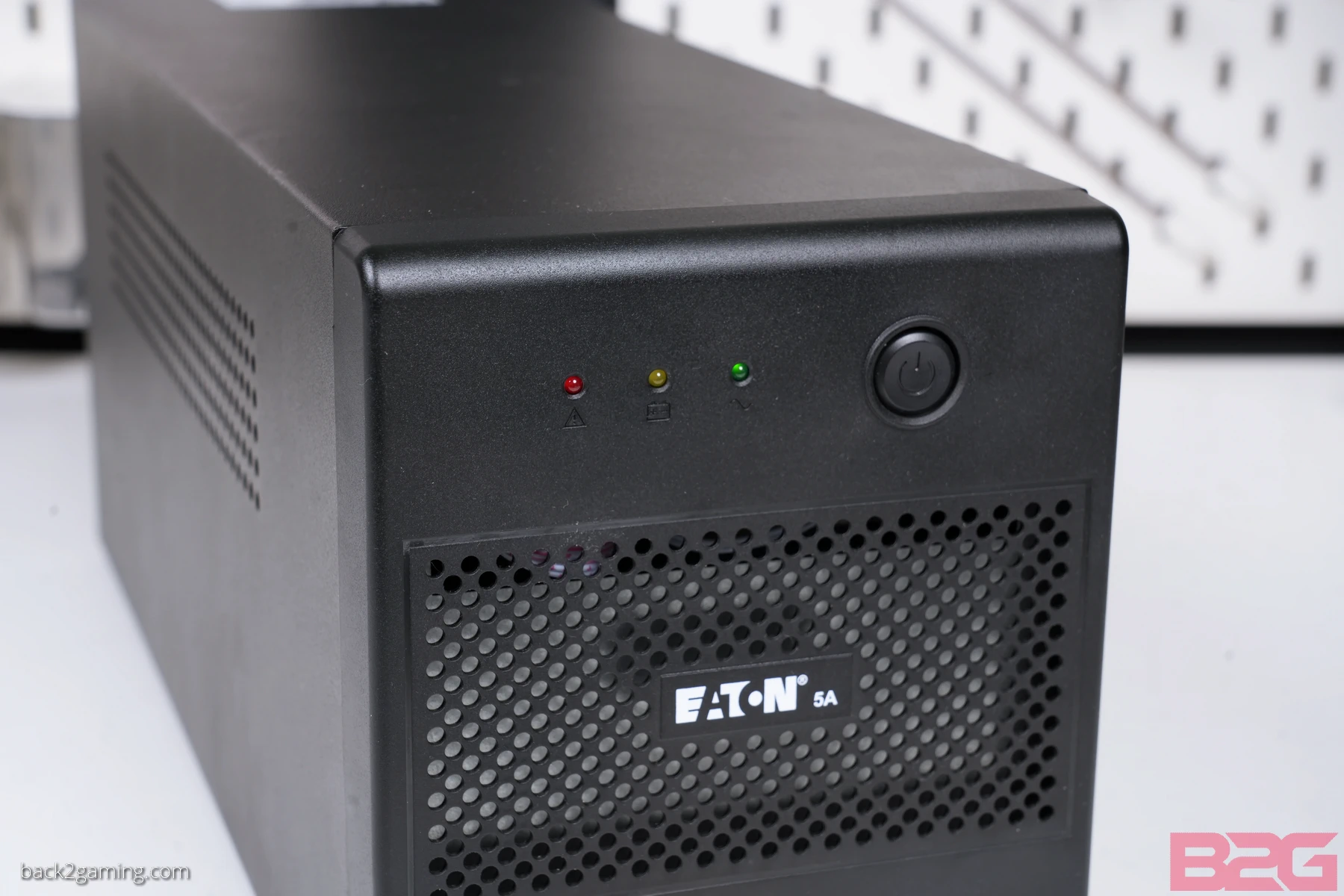

8 Comments
Yownnnn
feel ko nadale toh ng brownout habang nag-copy galing external noh
Back2Gaming Hindi naman. (Hindi pa) hahahaha, taguro tong electric distributor samin. Kunat kahit malakas ulan di nabitaw hahaha. Maganda ganda QoS
eto ba ung quasi-sinusoidal UPS
yessir malinis naman AC waveform unlike ibang quasi na puro noise
Awesome thanks
Mine shutsdown every 15 minutes if it’s on battery. I’m using the modem only. Why is that?
I can confirm the same in my case. I have a second unit that won’t work with low power devices like modems and routers. I got an APC in the meantime but I haven’t gotten around to investigating it further.